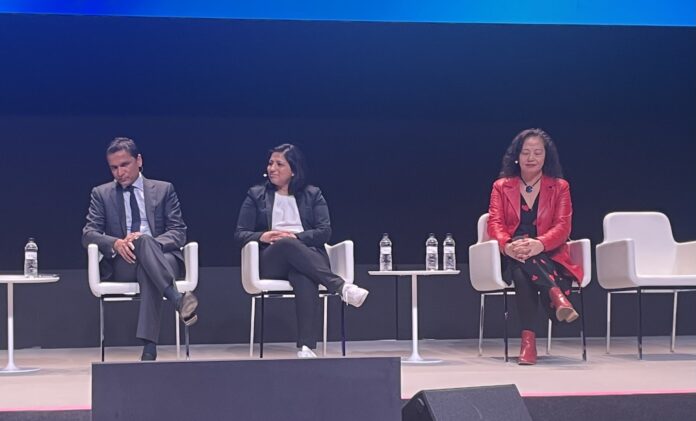‘The market approach is chaotic, but it doesn’t mean it’s overhyped:’ Intel exec
A panel discussion at Mobile World Congress 2023 sought to answer one of the industry’s most burning questions: Is private wireless overhyped? The three panelists answered this question, first in simple terms — two said no, one said yes, a little bit — but then went deeper, discussing the major use cases that actually have promise and how solutions providers are addressing the undeniable and lingering challenges.
For Caroline Chan, the general manager of the 5G Infrastructure Division in Intel’s Network Platform Group, private networks are “adamantly” not overhyped. “It’s beyond conclusion that [enterprises] need private networks,” she argued. “They’re never going to put out sensitive production data in the public network.” She added that while Wi-Fi meets a lot of the requirements for enterprise networks, they need something more reliable for low-latency applications.
Shahid Ahmed, the group EVP of new ventures and innovation at NTT, agreed that the potential and need for private 5G is not being overblown. He shared that a reduction of cables and wires on factory floors and warehouses is emerging as one of the most compelling reasons for implementing private wireless. Fewer cables means more flexibility and improved worker safety and mobility, Ahmed explained. “When you think about communications infrastructure on the factory floor, it’s a big deal to have wires running across the factory,” he said, adding that this benefit is particularly salient for sectors like industrial manufacturing and mining sectors.
Breaking from the pack slightly, Divya Ghai Wakankar, executive vice president of enterprise business & marketing at BICS, revealed that she does, a little bit, believe private wireless is overhyped “at the moment.” Industrial IoT devices aren’t ready yet, she argued, citing impacts from COVID-19 and the Russian-Ukraine war.
That doesn’t mean BICS doesn’t see the obvious potential. Ghai Wakankar said that in Europe, the public safety sector is seriously looking at private wireless for the level of security, scalability and reliability it can offer. Automotive, too, she said, is showing a lot of interest.
“These use cases have an issue at the moment — they have to leave and enter the private network,” she then said, addressing one of the logistical challenges around this topic: How to seamlessly move between a public and private network. BICS, though, says it has addressed this problem with its new approach, established in partnership with Microsoft. Providing SIMs and eSIMs and a SIM management platform will help their customers move assets seamlessly between private and public networks. “Like an international travel passport for connected devices — we provide them the passport,” Ghai Wakankar said.
With that problem being solved, what’s left? For Ahmed, he returned to Ghai Wakankar’s earlier point about devices. “We’re just beginning to see devices come to the market – cameras, other devices that support 5G natively, CBRS-based not only terminals, but also scanners and other devices that operations use,” he said, adding that once those are available, the private wireless market will push ahead.
“The second part is spectrum,” he continued. “There are still some challenges, even with CBRS in the U.S. You can get CBRS to support 5G speeds, but it’s still challenging. And if you go outside the U.S., regulators still haven’t appropriated spectrum directly to the enterprise.”
Third, Ahmad shared, is the lingering need for management simplicity. “Yes, that’s the vision: 5G will ultimately work like your Wi-Fi, but we’re not there yet. That’s still a long way to go and that gives management services providers like us a place in the market,” he said.
And with all sorts of players in the mix — hyperscalers, system integrators, traditional vendors and even enterprises who want to deploy private wireless themselves — the level of complexity around private wireless might feel almost insurmountable at the moment. “ “The market approach is chaotic, but it doesn’t mean it’s overhyped,” reasoned Chan. “We are in the process of sorting things out. There might not even be one approach; they’re might be multiple approaches.”

